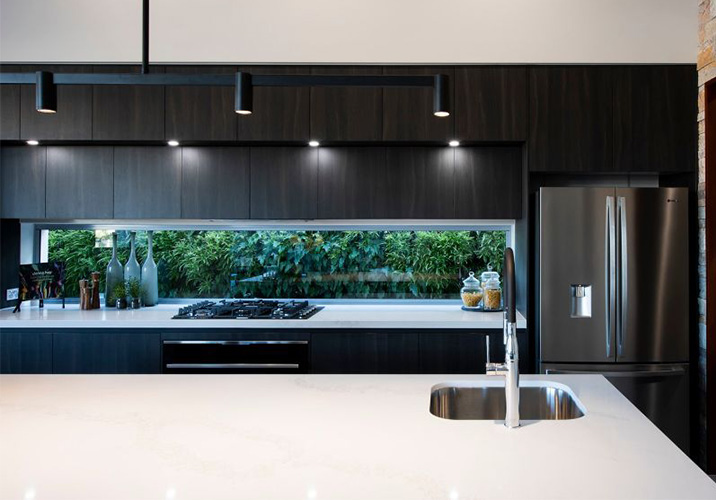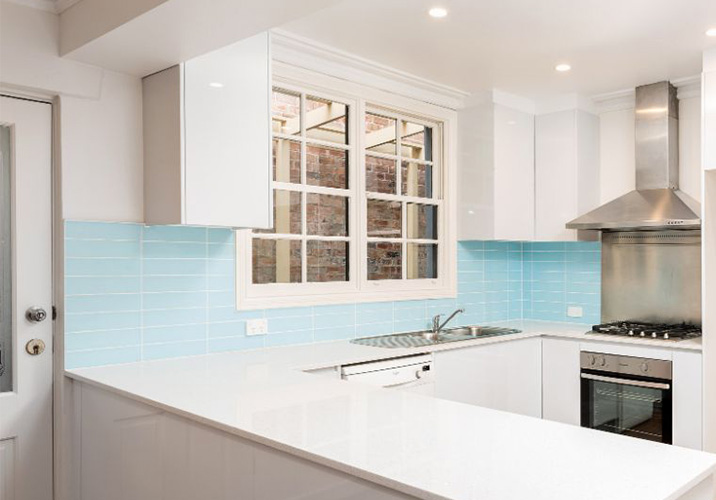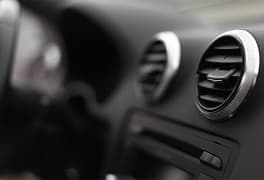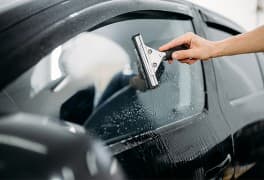
Find a local kitchen renovator
- Inspiration /
- Indoor projects /
- Kitchen /
- Kitchen splashbacks:...
Kitchen splashbacks: Different types & maintenance
Here's everything you need to know
What is a splashback?
Essential in every kitchen, splashbacks help protect the walls of your kitchen from oils, greases and other cooking debris. Additionally, they add a touch of style to any kitchen and act as a decorative element.A splashback is the material located on the kitchen wall above the cooktop or sink that shields the wall from all sorts of kitchen messes that occur during the preparation of a meal.

Different types of splashbacks
There are a wide selection of materials which you can choose from for your kitchen splashback. Every material has a different texture and will hence add a different dimension to your kitchen.
- Tiles: Tiles come indifferent colours,shapes and patternsand are the most popular splashback material in the market. If you aim to create an individualised splashback, getting a tile splashback is the way to go. One drawback of tile is that you need to put in a little more effort to keep it clean as it tend to attract dirt and stains.
- Mosaic: A splashback constructed of mosaic tiles is decorative and can create unique stunning effects. These mosaic tiles are laid neatly in sheet form. One drawback of mosaic splashbacks is that they require more hard-to-keep-clean grout than other tiles.
- Glass: Glass splashbacks are extremely hygienic and easy to maintain. Due to their versatility, they are increasingly becoming popular. The options in glass splashbacks are textured glass, plain glass or glass with colours painted behind. Create a unique splashback by installing wallpaper behind the glass splashback. Glass splashbacks may tend to be expensive to install, so make sure you can afford it before you make the purchase.
- Stainless steel: To add a modern look to your kitchen, opt for a stainless steel kitchen splashback. Although stainless steel will easily show fingerprints, smudges and other marks, it can be cleaned with little effort. They are available in a wide range of finishes, are very durable and heat-resistant.
- Benchtop: Benchtop splashbacks are those that are built of the same material as your benchtop. The options in benchtop splashbacks are stone composite, laminate or a veneer of stone.
- Timber: If you opt for a timber splashback, ensure that it isproperly sealedto protect it from contact with water. Timber splashbackscreate stunning visual effects.
- Mirror: Mirrored splashbacks are not resistant to food debris and moisture and are not as sturdy as glass splashbacks in this sense.
- Acrylic: a cheaper alternative to glass they come in a choice of designs, colours and surface textures that will meet any desire. Acrylic splashbacks can also be cut down to size, meaning you don’t have to worry about dirty seams in your kitchen. One of the best things about acrylic is how easy it is to maintain. All you need to do is give it a wipe!
Tile splashback options
There are a wide variety of colours, patterns and materials available when it comes to tiles for your slashback. Here’s a few factors to consider:
Avoid the ‘Basic Square’ option: Many modern kitchens no longer have the basic rows of square kitchen tiles. Though this remains common in older homes, modernised kitchens focus on styles of all types instead. Depending on your interior design layout and goals, you may want to choose something with a bit more interest. Consider your options in sizes, configurations, and shapes. Here are some options to think about.
Choose mosaics: This is a popular option, though it has come and gone style-wise several times. Many people adore this look right now because it offers various material options, colours and patterns. Glass mosaics are perhaps the most popular option because they can create a very dramatic look. Try to create a V pattern by laying the pieces at angles. Combine them with other types of tiles as well. You can even add feature lighting for even more dramatic appeal.
Larger than normal: Another option you have is to use oversized tiles. These appear larger and make a bigger impression on the overall style of the kitchen. Many have a natural stone or faux stone look to them. This option works well in both a modern and a traditional kitchen. Choose more subtle tones for traditional appeal, which will look good with a timber benchtop. If you have modern stainless steel in your kitchen, pair this with a rough textured tile instead.
Rectangular tiles: Shape is a big deal in style today for the splashback. Choose rectangular shapes because they may help your kitchen look a bit taller or longer. You can use them in both horizontal and vertical patterns to create visual appeal in the space.

Factors to consider before purchase
Before you decide to install a splashback, take into account your available budget and the maintenance required for a particular splashback. Note that some splashbacks are easily maintainable and can simply be wiped down using a damp cloth. Others may need special care such as the use of cleaning agents.
Maintaining your splashback
If you take a little time to keep your splashback clean and maintained, it can protect the wall behind your food-prep and cooking areas for a long time. Besides, since it’s such a focal point in your kitchen, you want it looking good, right? Read on for some tips on how to maintain and clean your splashback. If you need even more information on keeping your splashback looking shiny and new, talk to a local kitchen supplier.
Choose your cleaning cloth carefully
Using the appropriate cleaning cloth is essential to maintaining the best finish. You should avoid using abrasive options, such as a metal or plastic scourer, as these can permanently damage or scratch the finish. Always choose a lint-free option, such as a cloth or paper towel, to clean marks and spills. For a streak-free finish, go back over the surface with a dry, clean cloth after cleaning the splashback.
Use the right cleaning materials
You should take as much care in choosing your cleaning products as you do your cleaning cloths. Your splashback material will determine what you should use to clean it. You might need something as simple as a glass or all-purpose cleaner, or you may need to choose a specialised stainless-steel cleaner. When in doubt, chances are that you can safely stick with just a solution of water-diluted, gentle dishwashing detergent. Regardless of your splashback material, always avoid harsh or abrasive chemicals.
Don’t let spills stand
If you let spills or food splashes sit, they are much harder to remove, and they can even permanently stain the splashback or grout. Get in the habit of cleaning spills as soon as they occur, and you will be ahead of the game when it comes to keeping your splashback looking great.
Seal the splashback
Sealing a splashback will protect it from water, regardless of its material. A stone splashback will need resealing every few years while a tie splashback will only need the grout resealed. Also, check the integrity of the border of silicone that helps the splashback maintain its water impermanence, as it might need to be replaced periodically.
How much will your job cost?
The Oneflare Cost Guide Centre is your one-stop shop to help you set your budget; from smaller tasks to larger projects.



